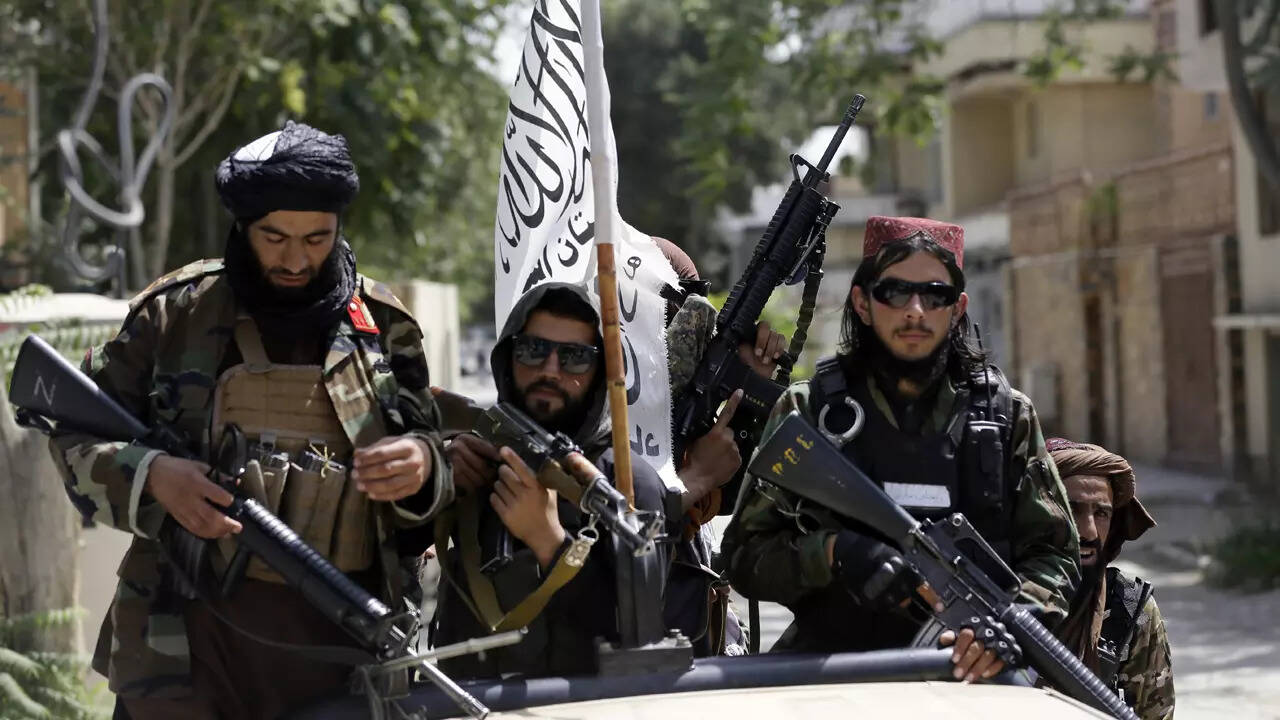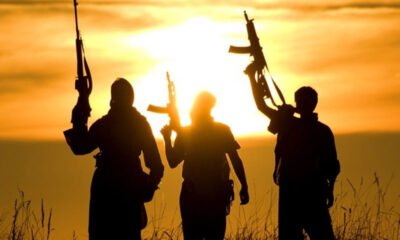Trends
Pakistan Launches Airstrikes In Afghanistan, Killing 15. Taliban Threatens Retaliation. The Perils Of Proxy, Pakistan, The Taliban, And The Evolution Of Terrorism In Afghanistan
Published
10 months agoon

In a deadly escalation of tensions, Pakistani airstrikes hit Afghanistan’s Barmal district in Paktika province on the night of December 24, killing at least 15 people, including women and children. The strikes reportedly targeted seven villages, including Laman, where five members of a family lost their lives.
Local sources indicated that Pakistani jets were responsible for the bombings, with Murg Bazaar village in Barmal completely destroyed in the attack.
The Taliban’s Ministry of Defence quickly condemned the assault, vowing retaliation and asserting that defending Afghan sovereignty is their legitimate right. The Taliban also claimed that many of the victims were “Waziristani refugees,” civilians displaced by military operations in Pakistan’s tribal areas.
Enayatullah Khwarazmi, spokesperson for the Taliban Ministry of Defence, expressed outrage on social media, stating that “several children and other civilians were martyred and wounded” in the attack.
Despite these claims, Pakistani officials have not confirmed the airstrikes. The attack comes amid growing tensions between Pakistan and Afghanistan, particularly over the presence of Pakistani militants within Afghan borders.
Pakistan, Afghanistan, And Insurgency
Since the Taliban’s return to power in Kabul in August 2021, relations between Afghanistan and Pakistan have become increasingly strained. Pakistan’s former Prime Minister Imran Khan had once hailed the Taliban’s victory as the “breaking of shackles of slavery.” However, two and a half years later, the border between the two nations has become a flashpoint.
After the 9/11 attacks, Islamabad turned against the Taliban under pressure from Washington, yet maintained a complex, double-dealing relationship. For two decades, Pakistan played a delicate balancing act—remaining an American ally in the war on terror while simultaneously offering refuge to the Taliban leadership, which was based in Quetta, Balochistan during this period.
)
Pakistan’s Miscalculation. The Blowback of Cultivating the Taliban
Pakistan has long cultivated the Taliban as a counterbalance to the U.S.-and India-backed Afghan government. When President Ashraf Ghani’s government collapsed in 2021 amid the U.S. withdrawal and the Taliban’s return to power, Pakistan expected to strengthen its strategic foothold in South Asia by establishing a client regime in Kabul. However, the situation turned out to be far from what Pakistan anticipated.
Afghan governments have historically had strained relations with Pakistan, primarily due to the disputed Durand Line border. During the Taliban’s insurgency years, Pakistan and the Taliban shared mutual interests—Pakistan needed the Taliban as a counterweight to Kabul’s government, and the Taliban needed Pakistan’s support. But with the Taliban now in power in Kabul, the dynamic has shifted.
Furthermore, the Taliban’s return to power in Afghanistan has emboldened the Tehrik-i-Taliban Pakistan (TTP), also known as the Pakistani Taliban. While the Afghan Taliban and the TTP are distinct organizations, they share similar ideologies—both are Pashtun and adhere to a strict Deobandi interpretation of Islam, with a commitment to establishing Sunni Islamic rule. The TTP’s objectives in Pakistan largely mirror what the Afghan Taliban has already achieved in Afghanistan.
Despite Pakistan’s repeated demands and threats, the Afghan Taliban has not severed its ties with the TTP, putting the two countries on a dangerous collision course. Pakistan, with its history of supporting Islamist insurgencies, is now facing the consequences of this strategy. In Afghanistan, this policy is reaping its latest and perhaps most significant blowback, as the very forces Pakistan once nurtured are now undermining its stability.
History Of Terrorism In Afghanistan In Relation To Pakistan
The history of terrorism in Afghanistan, particularly in relation to Pakistan spans several decades, shaped by shifting alliances, proxy wars, and the rise of Islamist militant groups.
1. The Soviet-Afghan War (1979-1989)
The roots of modern terrorism in Afghanistan, particularly its links to Pakistan, can be traced back to the Soviet invasion of Afghanistan in 1979.
Pakistan, under military ruler General Zia-ul-Haq, became a key ally of the United States in the Cold War. The U.S. and Pakistan, with the backing of Saudi Arabia, supported the Afghan mujahideen fighters, who were resisting Soviet forces. Pakistan’s intelligence agency, the Inter-Services Intelligence (ISI), played a key role in funneling support, training, and arms to these fighters.
Many of the fighters, known as “freedom fighters,” came from Pakistan’s tribal areas, and the ISI helped create a network of militant groups. This period laid the groundwork for the emergence of radical Islamist movements in both Afghanistan and Pakistan, including the Taliban, which would later become a major player in the region.
2. The Rise of the Taliban (1990s)
After the Soviet withdrawal from Afghanistan in 1989, Afghanistan plunged into a civil war between various mujahideen factions. The instability created an opportunity for the Taliban, a Pashtun-dominated Islamist group, to rise to power in the mid-1990s.
The Taliban was initially formed in Pakistan’s border regions, particularly in the Pashtun-dominated areas of Khyber Pakhtunkhwa and Balochistan. It was largely supported by Pakistan’s military and intelligence services, who saw the Taliban as a stabilizing force in Afghanistan and a friendly government to counter the influence of India-backed factions in Kabul.
Pakistan’s support for the Taliban during the 1990s was strategic—aiming to ensure that Afghanistan remained under a friendly, Islamist government and to maintain a strong influence over Kabul. The Taliban’s rule was marked by harsh enforcement of Sharia law and a brutal treatment of women, but it also brought relative stability to the country. However, Pakistan’s support of the Taliban, including providing sanctuary to its leaders, led to strained relations with Afghanistan’s Northern Alliance, a coalition of anti-Taliban factions backed by India, Russia, and the U.S.

3. Post-9/11 and the U.S. Invasion (2001)
After the September 11, 2001 terrorist attacks, which were carried out by al-Qaeda—an Islamist militant group that had established a safe haven in Taliban-controlled Afghanistan—Pakistan found itself in a difficult position. Under pressure from the U.S., Pakistan’s then-President Pervez Musharraf agreed to side with the U.S. in the War on Terror, despite its longstanding ties to the Taliban.
In the aftermath of the U.S. invasion of Afghanistan in 2001, the Taliban regime collapsed, but many of its fighters fled to Pakistan’s tribal areas, particularly in North and South Waziristan, which became strongholds for Taliban insurgents.
Pakistan’s military initially cooperated with U.S. and Afghan forces to combat these militants, but there were also accusations that Pakistan’s intelligence services continued to provide support to the Taliban, particularly to its leadership, which was based in Quetta, Balochistan.
4. The Rise of the Pakistani Taliban (TTP)
In the mid-2000s, the Taliban’s influence in Pakistan grew, leading to the formation of the Tehrik-i-Taliban Pakistan (TTP), also known as the Pakistani Taliban.
The TTP emerged from the tribal areas and other regions in Pakistan, with the goal of establishing a Taliban-style state in Pakistan, modeled after the Afghan Taliban’s rule. The TTP carried out numerous attacks against Pakistani military and civilian targets, including high-profile suicide bombings, school attacks, and assassinations.
The TTP’s rise marked a shift in Pakistan’s own battle with terrorism, as the group increasingly targeted Pakistan’s military, security forces, and civilians. The Pakistani government faced immense pressure from both domestic and international sources to crack down on the TTP and other militant groups operating in its territory.
However, Pakistan’s relationship with these groups remained ambiguous, as some factions of the military and intelligence agencies continued to view the Taliban as a strategic asset in the context of Afghanistan.
5. The Taliban’s Resurgence and Pakistan’s Dilemma (2010s-Present)
In the 2010s, the Taliban began to regain strength in Afghanistan, largely due to the withdrawal of U.S. and NATO forces and the growing instability within Afghanistan.
The U.S. invasion had ousted the Taliban from power, but the group continued to operate from Pakistan’s tribal areas, particularly after the 2001 invasion. By 2021, the Taliban had launched a full-scale offensive to reclaim Afghanistan, ultimately succeeding in toppling the Afghan government of Ashraf Ghani.
Pakistan’s role in the Taliban’s resurgence has been a subject of much debate. While Pakistan has publicly distanced itself from the Taliban, claiming to support a peaceful and stable Afghanistan, many believe that Pakistan’s military and intelligence agencies continued to support the Taliban in various ways, providing safe havens, arms, and logistical support.
The Taliban’s return to power in Kabul has had significant consequences for Pakistan, particularly with the resurgence of the TTP, which has intensified its attacks inside Pakistan.

6. Current Tensions and the Blowback
Today, the relationship between Pakistan and Afghanistan is marked by growing tensions. While the Taliban in Kabul maintains ideological ties with the TTP, Pakistan has repeatedly demanded that the Afghan Taliban sever its support for the TTP. The TTP, which seeks to establish an Islamic emirate in Pakistan, has launched a series of attacks against Pakistani security forces and civilians, further destabilizing the region.
In recent years, Pakistan has conducted airstrikes in Afghanistan’s border regions, targeting TTP hideouts, but these strikes have resulted in civilian casualties, straining relations with the Taliban. The Afghan Taliban, on the other hand, has continued to provide refuge to TTP fighters, deepening the rift between the two nations.
The Last Bit
The history of terrorism in Afghanistan, in relation to Pakistan, is a one of shifting alliances, strategic miscalculations, and the unintended consequences of supporting militant groups.
Pakistan’s support for the Taliban, initially a strategic move to counter India’s influence in Afghanistan, has now come back to haunt it. The Taliban’s resurgence in Kabul has strengthened the TTP, creating a new wave of insurgency and terrorism that Pakistan now must confront.
You may like
-


Meeting That Has India Spooked, George Soros Son And Muhammad Yunus. The Growing Nexus Bangladesh-Pakistan Spells Trouble For India?
-


Trump’s Return. What Lies Ahead For India In A World On Edge? A Lot Of Opportunities If Played Right!
-


The Bloody New Year’s Attack In New Orleans. What Drove Shamsud-Din Jabbar To Commit This Atrocity, And Why Car Ramming Is Increasingly Being Adopted As Acts Of Terror?
-


Another Terror Headache for India. Pakistan’s ISI Finds A Foothold In Bangladesh Giving Training To Rohingyas, Islamist Terror Groups
-


Trump’s Ego Erupts, Declares ‘I Am The President’ To Tame Musk’s Meteoric Rise And ‘Shadow President’ Claims. But Could Musk Be Harbouring Secret Aspirations To Lead America One Day?
-


Germany Christmas Market Attack. Why Are Such Attacks On The Rise, The Role Of The AfD, And Twitter’s Lax Approach To ‘Questionable’ Posts?
